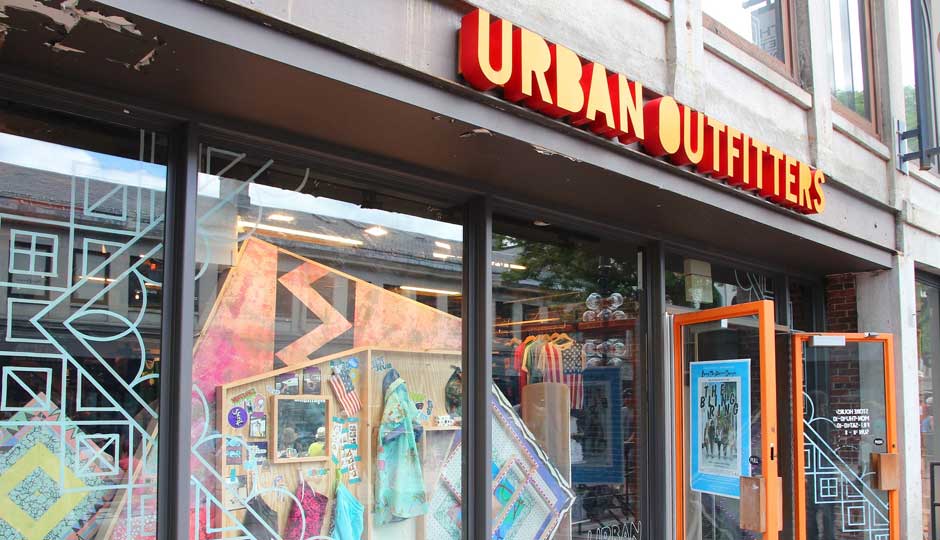BizFeed: Urban Outfitters’ Shocking Nosedive
1. Urban Outfitters’ Dreadful Earnings Report Sends Stock Tumbling 16 Percent
The News: Well I guess the experts were wrong. In a shocking earnings report, Urban Outfitters recorded sales of $739 million, which fell well short of analysts expectations of $757.58 million. Online retail expenses and deep discounting were major culprits. Anthropologie — normally a top performing brand — saw sales climb a disappointing 1 percent — the slowest growth in 11 quarters. It reported earnings per share of $0.26, below analysts’ estimates of $0.30. CEO Richard A. Hayne called it a “disappointing quarter” and said the company is “working diligently to regain its fashion footing.”
What it Means: Financial analysts have been raving for months about Urban Outfitters, calling it a comeback story after its flagship brand showed serious growth in the fourth quarter and the company hit $1 billion in revenue. Since October, shares had made a serious recovery and hit multiyear highs.
In fact, Mad Money‘s Jim Cramer told me Friday that Urban is “one of the most undervalued national retailers” and said the company is “for real.” TheStreet Ratings Team rated it as a buy, as did others.
The Wall Street Journal explained that expenses related to online retail as well as heavy discounting were the culprits for poor performance.
While conventional wisdom holds that online sales should be more profitable because websites don’t need the pricey real estate and labor necessary to maintain a store network, many retailers actually earn less or even lose money online after factoring in the cost of shipping, handling and higher rates of returns.
Urban Outfitters also has been hurt by the heavy discounting that has weighed on mall retailers. The discounts, along with higher expenses related to Web marketing and e-commerce technology, plus costs related to a shift from a South Caroline distribution center to a new facility in Pennsylvania helped drag down margins, which fell to 33.3% of sales from 34.8% a year earlier.
Fortune explains that competition has been hurting the company:
Increasing competition from fast fashion brands such as H&M, Inditex’s Zara and Forever 21 and a series of fashion misses have turned women away from Urban Outfitters’ stores.
Business Insider said it’s been “a rough quarter for retailers including Macy’s and JCPenney, which posted earnings below analyst expectations.”
2. The 40-Hour Work Week is Ancient History
The News: A recent EY study says that half of all managers work more than 40 hours per week. Plus, 39 percent say their work hours increased in the past five years. The Wall Street Journal’s At Work Blog has more:
Employees report that their responsibilities at work have increased while wages have largely stayed flat. And while technologies like company-provided smartphones and remote-work software have bought workers some flexibility, they also keep “people tied to work seven days a week,” [Karyn Twaronite, who heads up diversity and inclusion efforts for EY ] noted.
What it Means: Although the economy has improved, companies are still operating with a recession-era mindset. They’re doing more with less and asking an awful lot from employees. The days of executives twiddling their thumbs and waiting for the 5 p.m. bell are long gone.
3. Uber Now Gouging Drivers Even More
The News: Uber has been experimenting with taking an even higher percentage of a ride’s total cost. In fact, the company is charging new Uber X drivers in San Francisco and San Diego 30 percent — the highest percentage it’s charged yet.
Why it Matters: There seems to be this myth that all Uber drivers make a really good living. But that’s just not the case, especially for part-timers driving their own cars for the less expensive Uber X brand. And if this new plan is rolled out nationwide, they’ll make even worse money.
Fortune explains:
In a new pilot program in San Francisco, a small percentage of new UberX drivers will pay a 30% commission on their first 20 rides in a week, 25% on their next 20 rides, and then 20% on any rides beyond that. Uber is also testing the same commission in San Diego, except that the tiers are for the first 15 and next 15 rides in a week.
The tiered structure, which Uber began testing in April, will hit new, part-time drivers the hardest. Those who only work a few hours a week will never see a 20% commission, which used to be standard for UberX, the company’s product where people use their personal cars for work. The new system rewards drivers who work more per week, and full-time drivers will likely reach the top commission tier in a couple days, but even the most dedicated get dinged on their first 30 or 40 rides.



